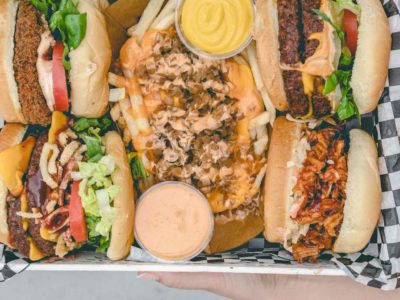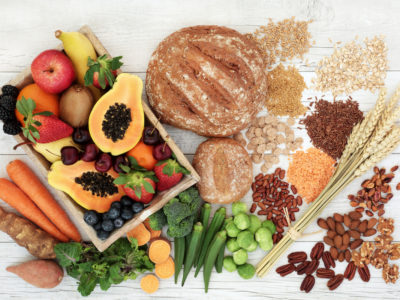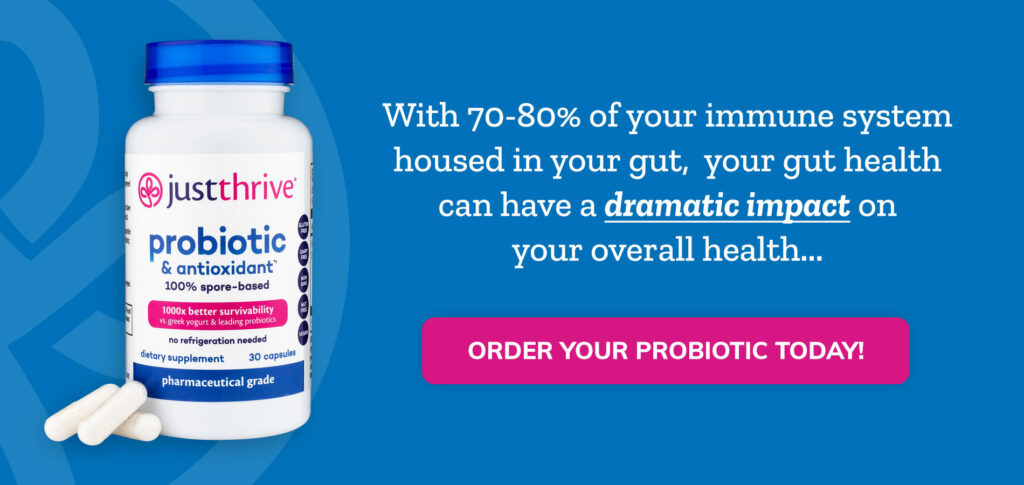Table of Contents[Hide][Show]
Breaking it Down: How to Start Eating Healthier+−
- Shift Your Mindset from Short-Term Goals to Long-Term Goals & Desires
- Improve Your Environment & Alert Your Community
- Learn Some Basic Cooking Skills
- 9 Gruesome Fast Food Facts You Probably Didn’t Know
- Understand Ingredients & Nutritional Labels
- Easy Ways To Speed Up Digestion And Metabolism Naturally
- 10 Foods To Add To Your Microbiome Diet
- Fiber 101: An In-Depth Guide
It seems like every new year is the same song and dance: you decide that this is finally going to be the year where you get it together and start taking better care of yourself.
Have you been there? Have you been successful? If you’re like most people it hasn’t quite stuck like you wanted it to, which brings us to the bigger question: Why does it seem so hard to start eating healthy? ?
The simple answer is because it is hard. Not in the practical, what-to-do sense. The actual act of eating healthier is about as difficult as eating anything else, thanks to how many healthy food choices are on the market these days.
However, our habits, both in what we crave as well as what we spend our money on, have a huge influence on whether or not we actually make the changes we say we want in our lives. This applies to anything, by the way – not just changing how you eat.
Changing Your Habits for a Healthy Diet
Think of your brain like a construction crew for a second. When you’re young, the crew hasn’t built many roads yet.
As you start to form behaviors and patterns, your brain begins building “roads” inside of itself (using neural connections) to make those behaviors more habitual, or easy to achieve with less brain power. When something is habitual, you don’t need to spend conscious effort toward achieving it.
It’s like breathing: you wouldn’t be able to get anything else done if you were constantly having to think, “breathe in…breathe out…”
The body doesn’t want you to focus on tasks because from a survival standpoint, that burns too much energy. So, the solution is to create habits.
It’s in our brain’s best interest to make a habit out of as many things as possible in order to expend less conscious energy into tasks.
These “roads” being built with your neurons are the habits you form over years of performing a behavior. Certain behaviors that feel good cause dopamine to release into the blood, elevating mood and creating a positive feedback loop for performing those behaviors.
This enforces the “roads” being created between neurons so that you become more efficient at performing those tasks or behaviors. And, over the years, those “roads” turn into super-highways, making them even more ingrained in our brain as we continue to stick to our habits over time.
Evolutionarily, this is a great function as these automatic neurons conserve energy for the brain and body to be used elsewhere. And for most of human history, we didn’t have extra energy to expend, so this made sense.
The problem is, we’re living in a modern world with modern access to things that used to be scarce, especially when it comes to food.
So, our paleolithic brains are prioritizing habits that get us the most dopamine (happy hormone) release, which often correlates to things that used to be hard for us to find, like sugar and fat.
This is why it’s so easy to form bad eating habits. Processed foods today are hacking the body’s natural inclination to crave those foods and make a habit of the process of getting them.
Think about it; the things that supplied us with the most energy (i.e. fats and carbohydrates) were rare for all of human history except for the last 100 or so years.
And what are the key ingredients in processed food? You got it!
Our brains are still wired for food scarcity, even though we are now in a world of abundance.
So, processed foods full of fats and sugars are simply playing on our body’s natural craving for more calories, while forming habits in the brain for you to easily obtain those junk foods.
With that knowledge, we then turn to where the real difficulty comes in where you don’t actually break habits, you just replace them.
So, is there a way to retrain your brain to seek out healthier food rather than the stuff you’re trying so hard to avoid? There sure is.
Related
6 Tips To Stop Being A Junk Food Junkie
Want to end your junk food junkie life? You can teach yourself how to stop eating unhealthy foods with these tips!
Ways to Make Healthy Eating Easy
There are absolutely ways to set yourself up for success when it comes to shifting your eating habits.
While it might feel hopeless at first once you understand how habits are formed, it’s actually quite freeing. Now that you know how and why the brain creates certain habits, you can use those strategies to create the ones you want.
Most people worry about two main things when they start trying to eat healthier. Those are:
- Knowing what to eat
- How you’re going to afford it
Simple & Healthy Food Swaps
You’ve probably heard of many of the hardcore elimination diets that have gotten popular over the last few years: vegan, paleo, keto, intermittent fasting, carnivore, etc.
We’re not going to get that specific today.
While some folks find great success in each of these dietary programs, many people simply don’t want to stick to something so strict for the long-tem.
If you’re looking for the bare-bones, common themes among all of these diets, you’ll notice that they all:
- Emphasize whole foods over processed foods
- Encourage you to seek out the highest quality foods possible
- Seek out densely nutritious foods
- Prefer to look at the vitamin and mineral content vs. focusing too much on calories
- Point out the benefits of shopping locally when possible
- Promote learning to grow some of your own food
- Want you to start paying better attention to your hunger vs. cravings
All in all, these each make for ideal starting points for a general healthy meal plan.
Even without choosing to exclude any food group, your health is likely to be much better off if you just focused on these foundational aspects.
Need some extra leverage to get started?
Some below for some quick specifics for how implementing a healthy eating plan can significantly improve your health include:
- Preventing obesity (and type 2 diabetes) by helping with weight loss. Along with regular physical activity, eating right is key to maintaining a healthy weight.
- Helping to fight serious heart disease by lowering blood pressure and cholesterol levels.
What Does the Ideal Healthy Plate Look Like?
Beyond the broad strokes ideas listed above about quality and quantity, what does an “ideal” meal that isn’t too restrictive look like?
In general, you want to hit all three macronutrient categories: protein, fat, and carbohydrates.
A simple meal setup would be a protein serving around the size of your palm, a similarly-sized carbohydrate option, about the size of your thumb for cooking oils or healthy fats, (these three together take up about ½ of your plate) and then a decent portion size of low-carb veggies for the other half of your plate.
If you can nail down this meal structure as your standard meal template – for all 3 meals in a day – you’ll be on a great track to feeling like your hunger is satisfied while helping to improve your overall health.
We’ll get into snacking a bit later, but first let’s get into the money side of things.
How to Budget to Eat Healthier
A common hesitancy for people trying to eat healthier is the worry that it will cost more money.
As we’ll discuss in the habits section next, you’ll actually find that eating healthy is very affordable – especially when you’re buying fewer unhealthy items.
Once you get a sense of how your old grocery shopping habits can be replaced by new ones, you can determine further budget choices for yourself from there.
But to start, try tallying what you generally spend on food each week – both groceries and eating out. Once you have a rough guess on that, you can allocate that money instead to healthy choices.
Beyond the nutritional reasons, the “ideal plate” model discussed above is also great because it can be done affordably. Making your meals from scratch is now much cheaper than relying on restaurants or other sources of healthy food.
Breaking it Down: How to Start Eating Healthier
Now we’re going to get practical with ways to make eating healthier easy.
Because even though you now have a starting point with the “ideal plate,” we have to make things as easy as possible for you to form new habits, otherwise the old ones creep back in.
So, how do you do that? Small shifts in each of these areas will make it suddenly and surprisingly easier to make healthy eating choices:
- Your mindset (short-term vs. long-term thinking),
- Your environment(s)
- Supportive community
- Basic cooking abilities
- Navigating menus and nutrition/ingredients labels
Let’s dive into them a bit more.
Shift Your Mindset from Short-Term Goals to Long-Term Goals & Desires
When making a habit change, it’s good to have long-term goals for yourself to remind you why you’re making these changes.
Often, it’s easy to fall into old patterns without thinking about it, or when we get into a bad mood.
Having a way to remind yourself of your long-term goals and desires as the reason to reach for something healthier can be a great way to stay away from less-healthy cravings.
For example: “I want to eat healthier so that I have the energy to play with my grandkids.”
However it’s up to you to really solidify that “why” before you begin.
Improve Your Environment & Alert Your Community
The easiest way to avoid unhealthy or processed foods is to stop keeping them in your house.
If you want to do a clean sweep and start fresh, you can. Or, you can just stop buying them and when they run out, they’re out.
You’ll use that money toward healthier alternatives, including snacks. Some good healthy snacks include: fruit, protein bars, dark chocolate, and nuts instead of chips, cookies, and other added sugars or empty calories. .
Do the same for your main foods. Replace pre-packaged, frozen, processed, or otherwise unhealthy foods that you might use for meals and replace them with fresh vegetables, starches (such as potatoes, rice, and beans), whole grains, and healthy cuts of quality meat, fish or eggs.
Next, when it comes to the people around you just tell those you live with or spend a lot of time with that you’re making this change. It’s up to you how much of your “why” or details of the plan you get into, but firmly state that this is something you’re working on and you would appreciate support.
If you find it difficult to have people you already know support you, there are plenty of ways to find like-minded people at conferences, online, in intramural sporting leagues, or at various exercise facilities.
Having support from other people somewhere will make it much easier for you to stick to your new goals.
Learn Some Basic Cooking Skills
This is a major part of eating healthier that many people don’t realize when they first begin. The most affordable (and ultimately, healthiest because you control the ingredients) way to eat healthier long-term is to cook for yourself more often.
Luckily, healthy cooking does not need to be difficult. In fact, the simple structure of your ideal plate makes making healthy meals pretty easy to grasp.
Try batch cooking a few servings each time you cook, or even prepping certain parts of your meal ahead of time (like starches or meat). This can make it more convenient to eat healthy during a busy work week so you’re not tempted to get fast food.
Also, leaving the spices off until you eat can allow you to change the taste of your meal each day, so you’re less likely to get bored.
For an easy way to get started cooking, check out this Bulletproof blog from one of our favorite healthy eating mavens.
Related
9 Gruesome Fast Food Facts You Probably Didn’t Know
Beyond increased insulin resistance and obesity risks, here are nine more hideous facts to know about fast food consumption.
Understand Ingredients & Nutritional Labels
You don’t necessarily need to become an ingredients expert for this one.
The main thing to remember is if a product has a bunch of ingredients that are hard to pronounce or sound chemical, it’s probably more processed than what you’d like to eat.
Think about it, the purest foods don’t even have labels (besides meat sometimes, to showcase the protein and fat content).
Vegetables and fresh fruits rarely have labels, and things like nuts will just say “raw almonds” in the ingredient list.
When it comes to the nutritional label, pay attention to the overall carbohydrate, fat, and protein contents first.
Are there decent servings of each to constitute a well-rounded food?
Next, below the carbohydrates check to see how much fiber is in the food. Carbohydrates with more fiber will feel more satisfying and won’t spike your blood sugar as much.
After that, is there any trans fat? This is a big no-no to avoid.
With those simple things in mind, you’ll be much more likely to pick healthy options for yourself.
Final Thoughts
All of the practical tips covered here are made with one common thing in mind and that’s building new habits by utilizing your old actions as often as possible. This makes it easier to transition from your old patterns into these new habits.
This might not sound as exciting as “pushing yourself through it,” but the reality is that we cannot stick to behavior changes powered on motivation or willpower alone.
Motivation will run out, but the discipline to make healthier choices until they become habit is what helps us achieve long-term success.
So pick your “why,” gather your support team, figure out your action plan, and start building those ideal plates. Your future self will thank you!
You May Also Like…






